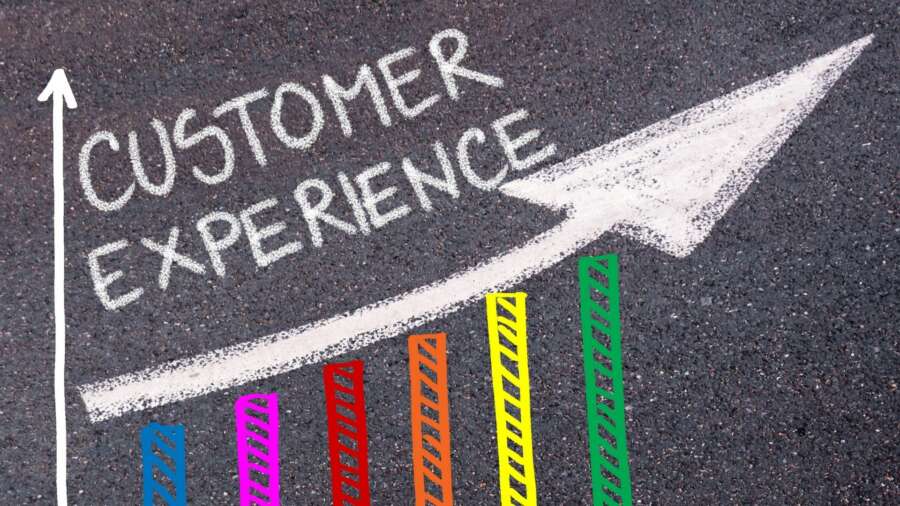
By Neil Hammerton, CEO and Co-founder, Natterbox
Customer experience has become one of the hottest buzzwords in the business world, and according to Econsultancy and Abode’s Digital Trends report, which looked at the single most exciting opportunity for B2B companies this year, customer experience came out top. In fact, The Temkin Group found that companies that earn $1 billion annually, can expect to earn an additional $700 million on average within the first three years of investing in customer experience.
This is a bonus for businesses as customer expectations are rising and the pressure is on for brands to deliver at every stage of the customer journey.
Yet the terms ‘customer service’ and ‘customer experience’ are often used interchangeably, even though they are not the same. So, do brands really know what customer experience means, and how do they turn their brand from a customer service only business, to a customer experience one?
Service is one slice of the customer experience cake
Customer service focuses simply on singular interactions between a customer and the brand. It is a more reactionary process, normally after a purchase has been made, with the aim of providing customers with assistance, whether solving a particular issue or responding to an enquiry in order to improve customer satisfaction.
Customer service requires brand representatives to have specific skills in order to be able to deliver it successfully and to a satisfactory level for the customer. Whether that’s detailed product knowledge or the ability to empathise with a customer’s feelings, especially when they aren’t happy with a product or service they have received.
Taking customers on a journey
Customer experience on the other hand, encompasses a customer’s entire journey with the brand and is the responsibility of everyone within the business. This includes everything from the customer’s first visit to the website, right the way through to any customer service they receive post-purchase. It is about the entire lifecycle of a customer journey, including every touchpoint a customer comes into contact with.
The best way for businesses to measure customer experience is by understanding how their customers feel about the brand, for example if they feel loyal towards it and pleased with the service they have received, or if they have been left unhappy and are considering using a competitor service or brand instead. In other words, it is all about the impression a company leaves on a customer after every interaction. With this in mind, to get the best results, customer experience has to be a proactive business strategy.
Unifying your communications
A good customer experience isn’t going to be created overnight and there are a number of steps that businesses can take to achieve it. Although it may sound contradictory, the best place to start is customer service.
Businesses usually fall down in their customer experience offering because they offer poor customer service. Afterall, customer service is often the last interaction a customer will have with a business and so the sentiment of that interaction will likely have a lasting impact on their overall impression of the brand.

Neil Hammerton,
Unified comms is now the norm for end customers, i.e. using multiple channels to interact with a brand. However, this means any customer service agent that we engage with is likely to be a different person each time, which has created an increasing issue of disparity and complexity for businesses when it comes to consistency and personalising communication with customers. Poor customer service and ultimately, customer experience, is therefore often the result of businesses prioritising only one touchpoint, for example, online web and chat services, which means other channels, like the phone, and the agents manning them are unaligned, making it more likely for them to fail. This is significantly worsened when brand representatives are not given the tools that they need to be able to provide the service that customers require, such as data gathering tools that enable them to instantly see details of customers’ previous interactions with the brand.
Creating positive brand sentiment with CX strategy
The front line of customer service is ultimately where businesses can gain some of the best insights about their customers. Whether it’s about how they use the business and their purchasing habits, or how they feel about the brand and how regularly they return, if at all. Businesses have to be able to understand their customers as a vital starting point, before they can even begin to create the customer experience that they expect. In light of this, being a customer experience brand means incorporating customer service into a wider CX strategy.
To do so, businesses need to select the communication channels they want to use for customer interactions and ensure they are continually manned to avoid disappointment. Furthermore, an integrated customer cloud platform can ensure details and information from all channels are kept in the same place to enable a consistent experience and ultimately provide a great customer experience. Other evolving technologies have also already dramatically transformed the communication world. Online chat, for example, has now been developed with front-end artificial intelligence filtering, which comes into play before a human-needs to be engaged. A breadth of solutions are also being developed to tie multiple channels together into an omnichannel agent view.
Customer service and customer experience are not the same, but they work hand in hand. If businesses want to become a brand known for their customer experience, they need to get their customer service right first. By applying these kinds of technologies to their customer service offerings, brands can begin to truly make the most of an omnichannel offering and the abundance of customer data they have access to, enabling them to put customer experience at the heart of the business


